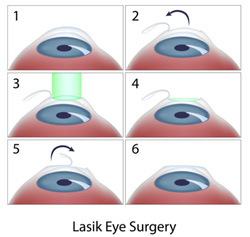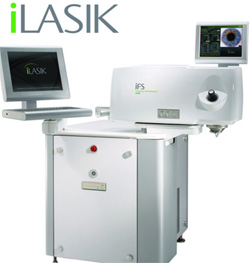In the normal eye, parallel rays of light are brought to a point focus on the retina – the light-sensitive layer at the back of the eye. This is known as Emmetropia. This focusing is done by the Cornea and Lens of the eye. When such a sharp focus is not achieved, a refractive error condition results and the Vision is not clear.
Common Refractive Errors are:
-
Myopia or Nearsightedness
Myopia is a condition of the eye where the light that comes in does not directly focus on the retina but in front of it, causing blurred vision. In myopia, close objects look clear, but distant objects appear blurred -
Hyperopia or Farsightedness
Hyperopia is a condition of the eye where the light does not directly focus on the retina but behind it, causing blurred vision. In this condition, distant objects can be seen clearly, but close ones appear blurred. -
Astigmatism
A normal cornea is round and smooth but a cornea with astigmatism is not perfectly rounded but has a very slight curve and when this curve is too great, or pointing in the wrong direction then astigmatism occurs. It is possible to have astigmatism in combination with myopia or hyperopia.
How is Refractive Error Corrected?


- Glasses (Spectacles)
- Contact Lenses
- Cornea based procedures
- I.Radial Keratotomy
- II.PRK (Photo Refractive Keratotomy) using Excimer Laser
- III.LASIK (Laser Assisted In Situ Keratomileusis) using Excimer Laser
- IV.LASEK (Epithelial Laser Keratomileusis)
- Lens-based procedures
- I. Refractive Lens Exchange
- II. Phakic Intraocular Lenses

